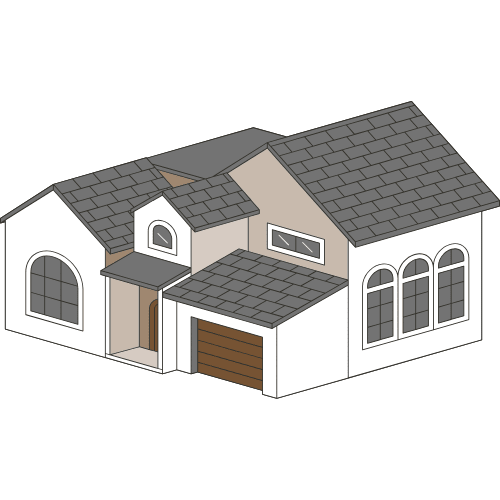Roof Shingle Calculator
Easily calculate how many shingles you need for your roof with our free Roof Shingle Calculator. Enter roof area, shingle coverage, and waste percentage to get an accurate total

Planning a roofing project? Knowing exactly how many shingles you need is crucial to avoid waste and stay on budget. The Roof Shingle Calculator helps you quickly determine the number of shingle bundles required based on your roof area, shingle coverage, and a waste allowance.
Formulas
Formula to Calculate Total Shingle Bundles
This formula gives you the base number of bundles required before considering waste.
Formula to Include Waste Percentage
This formula increases your total bundles to account for cutting, overlaps, and errors.
Example
Suppose you have:
- Total Roof Area = 2000 ft²
- Shingle Coverage per Bundle = 33 ft²
- Waste Percentage = 10%
Step 1: Base bundles
Step 2: Adjusted bundles with waste
So, you’ll need around 67 bundles of shingles.
FAQs
1. What are roof shingles, and what are the main types available?
Roof shingles are overlapping units of material, typically asphalt or composite, used to waterproof and protect roofs from weather elements. Common types include three-tab (budget-friendly, basic durability), architectural (thicker, more stylish with longer lifespan), and luxury/synthetic (premium options mimicking slate or wood). Asphalt shingles dominate due to affordability and ease of installation, but metal or composite variants offer better resistance to fire and impact.
2. How do I calculate the number of roof shingles needed for my project?
Start by measuring your roof's square footage: multiply length by width for each section, add them up, and account for pitch (steeper roofs need more material—use a multiplier like 1.05-1.2). Divide total squares by 3 (since one bundle covers about 33 sq ft) and round up. Always add 10-15% extra for waste, ridges, and overlaps to avoid shortages.
3. What is a roof shingle calculator, and why should I use one?
A roof shingle calculator is an online tool that estimates bundles needed based on inputs like roof dimensions, pitch, and waste percentage, saving time and reducing errors. It factors in unit conversions (e.g., sq ft to m²) and outputs totals for shingles, underlayment, and nails. Using one ensures accurate material orders, preventing over- or under-buying that could inflate costs.
4. What factors should I consider for waste percentage in shingle calculations?
Waste percentage accounts for cuts, overlaps, and errors—typically 10% for simple roofs, up to 20% for complex designs with valleys or dormers. Input it into the calculator to get an adjusted total, ensuring you buy enough without excess. Neglecting this can lead to mid-project shortages; always verify with a professional for steep or irregular roofs.
5. How long do roof shingles typically last, and what affects their durability?
Standard asphalt shingles last 20-30 years, while premium architectural ones can reach 40-50 years with proper installation. Factors like climate (harsh weather shortens life), ventilation, and maintenance (regular inspections) play key roles. Choose impact-resistant options in hail-prone areas to extend lifespan and maintain warranty coverage.